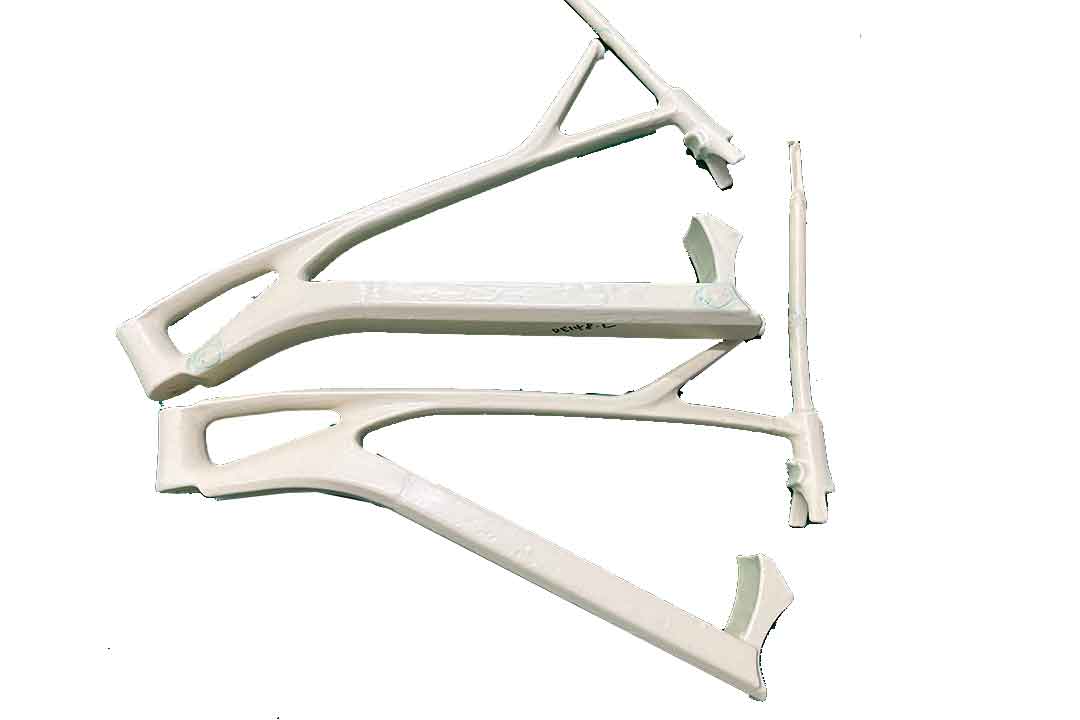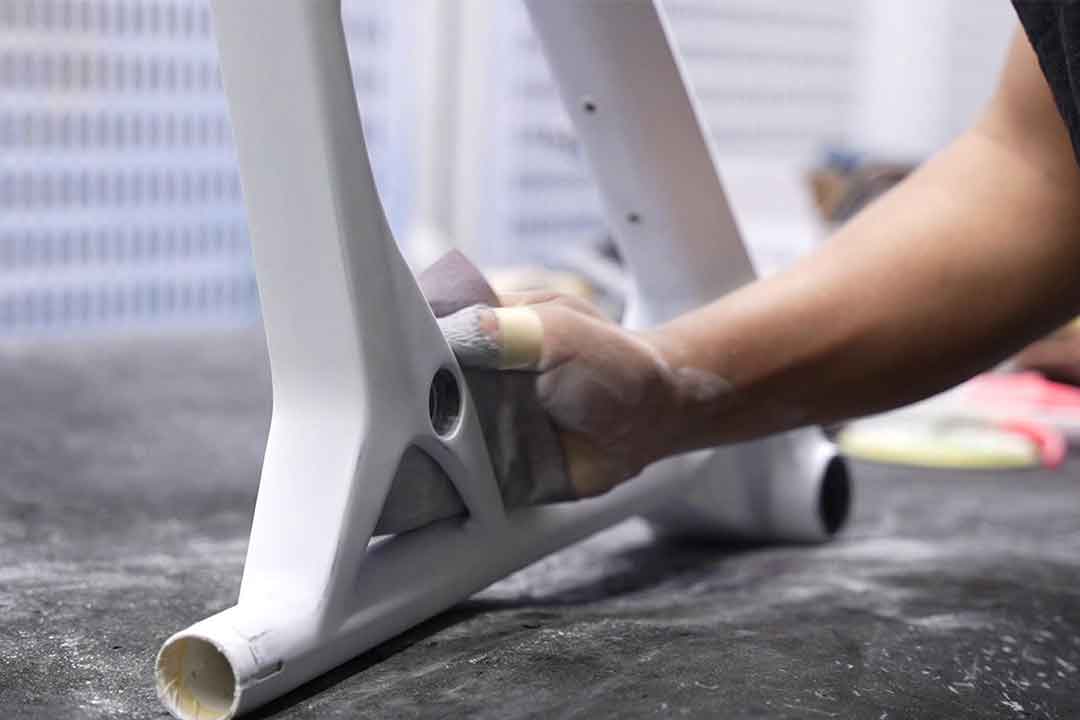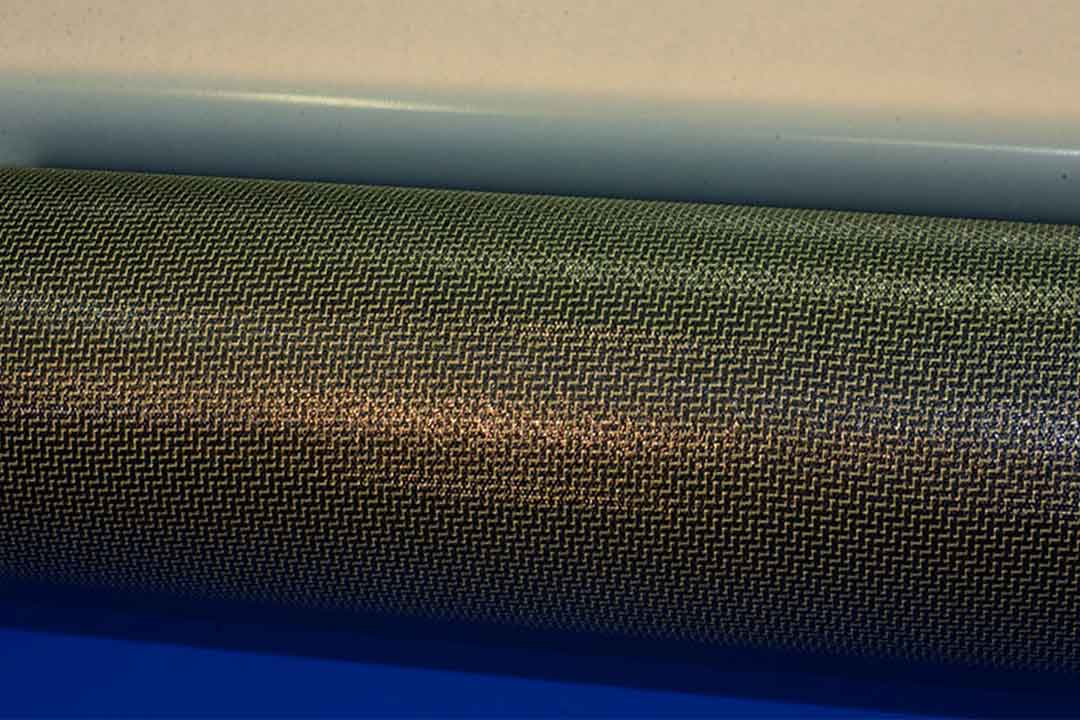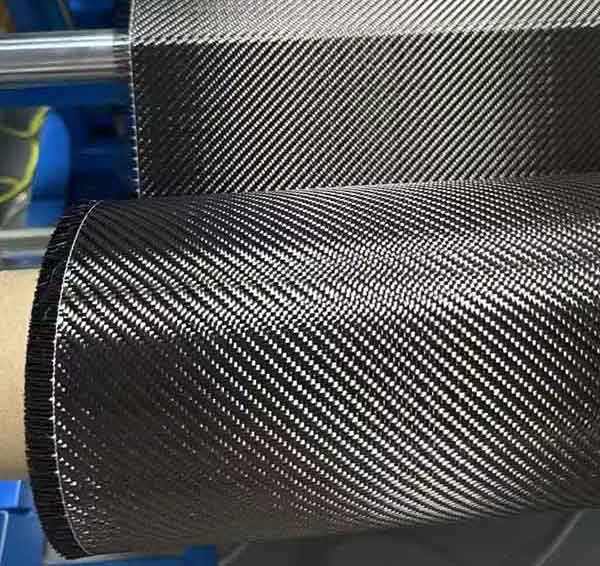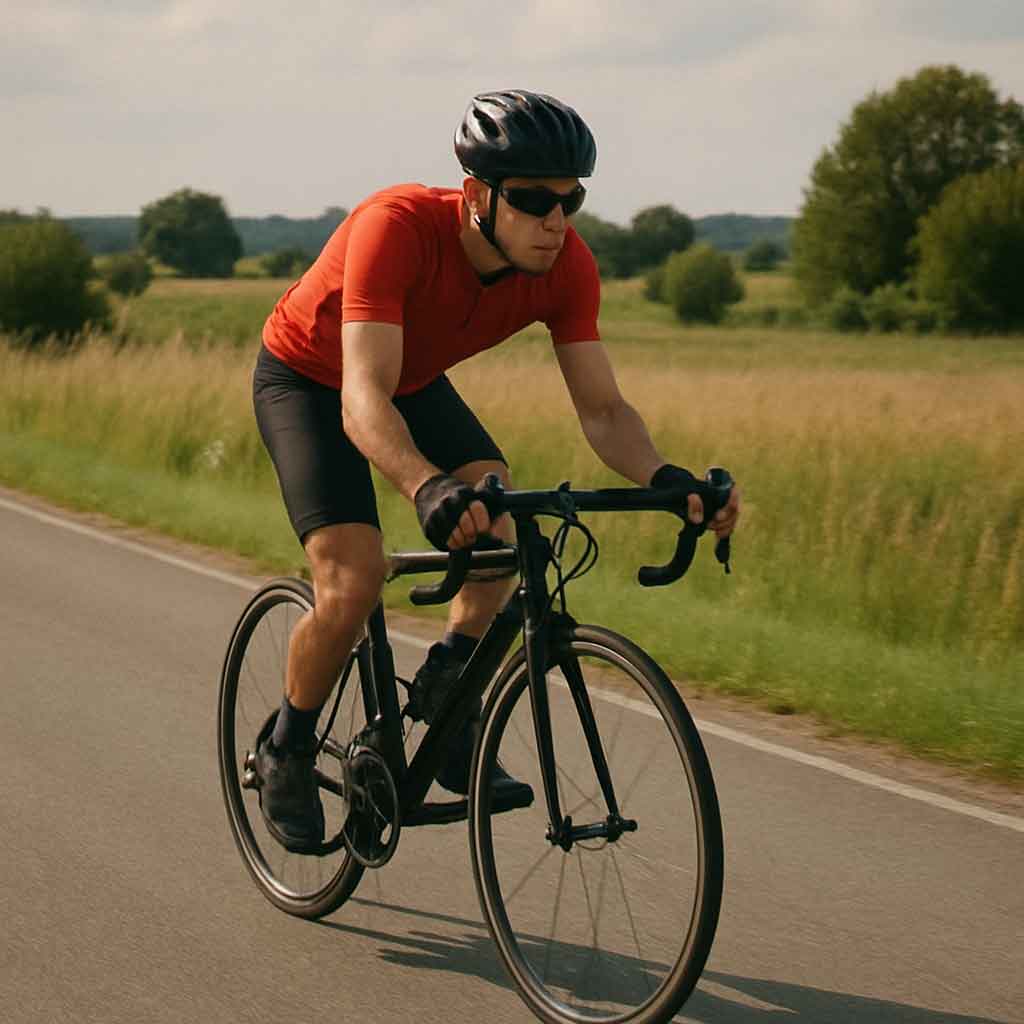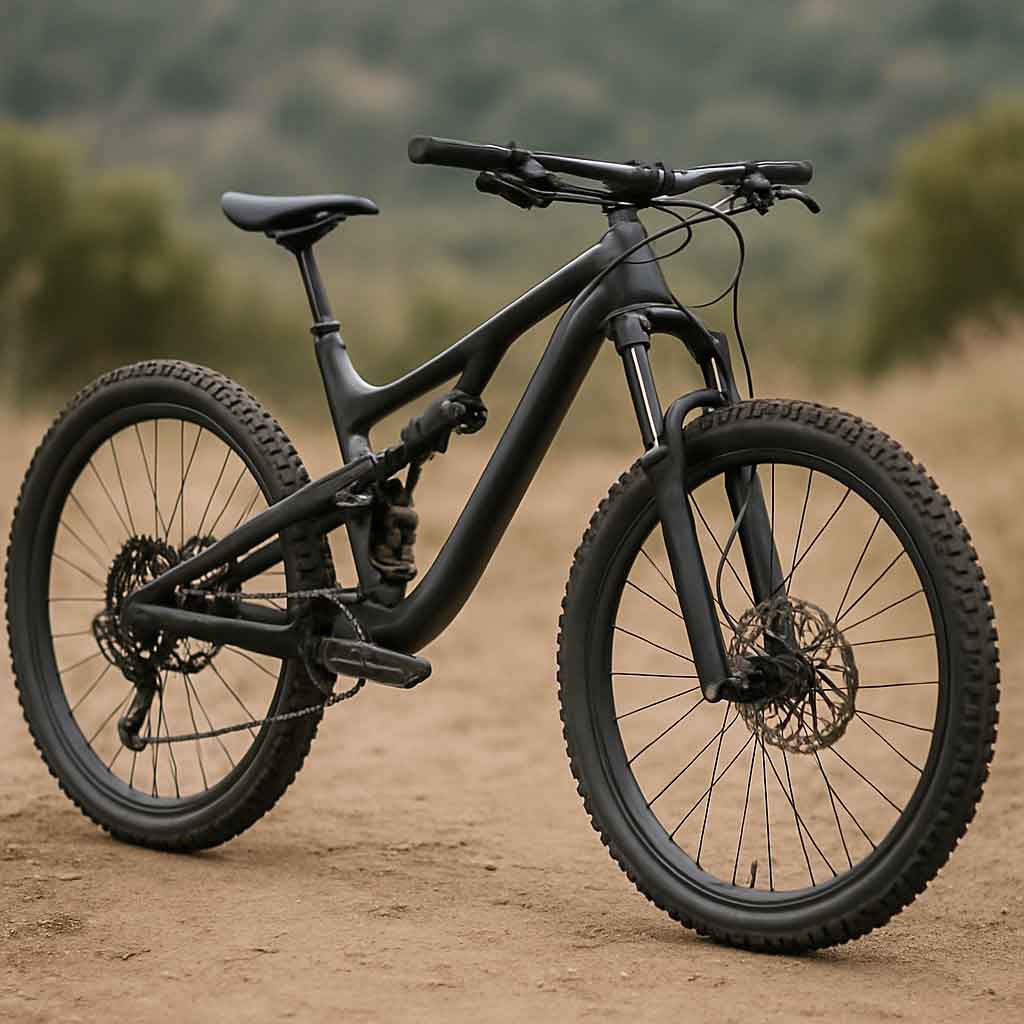Welcome to Mondince Bike - A well-known factory specialized in produce carbon bike frame and other parts since 2007.
How to Choose the Right Cycling Shoes
Choosing the right cycling shoes can significantly enhance your biking experience, whether you're mountain biking, road cycling, or spinning indoors. With the array of options available, selecting the perfect pair can seem overwhelming, especially for women looking for the best fit and performance. This guide will help you navigate the choices and make an informed decision.
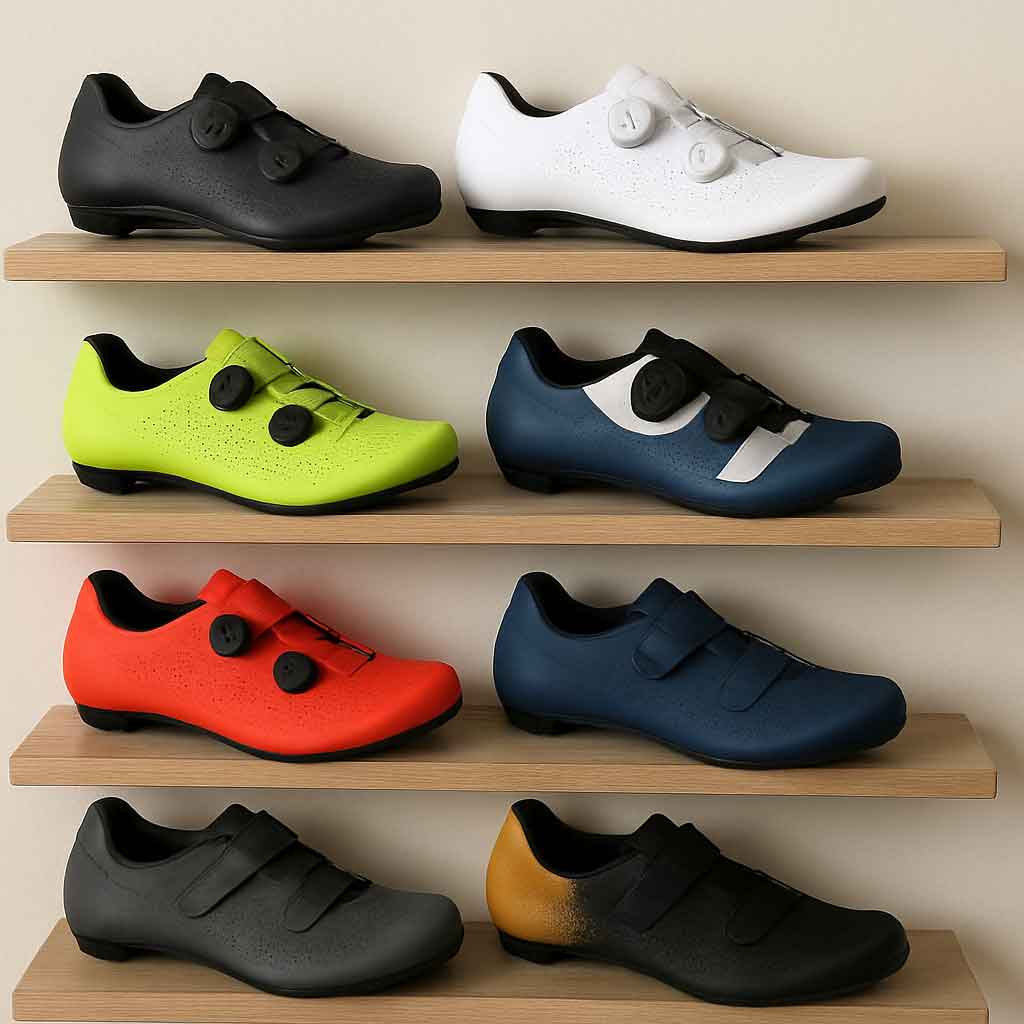
Cycling shoes are designed to improve your cycling performance. Unlike regular athletic shoes, cycling shoes have a stiff sole that helps transfer power more efficiently from your legs to the pedals. This not only enhances your speed and endurance but also reduces the risk of foot fatigue and discomfort.
Enhanced Power Transfer
One of the primary benefits of cycling shoes is their ability to enhance power transfer. The stiff soles of these shoes allow for maximum energy transfer from your legs to the pedals. This efficiency is crucial for maintaining speed and improving your overall cycling performance. Without a stiff sole, much of the energy you exert would be lost, leading to less effective pedaling.
Increased Comfort and Reduced Fatigue
Cycling shoes are specifically designed to reduce foot fatigue and increase comfort during long rides. The snug fit ensures that your feet remain secure, preventing unnecessary movement that can lead to blisters and discomfort. Additionally, the shoes are often designed with ventilation in mind, keeping your feet cool and dry, which is essential for longer cycling sessions.
Improved Safety
Safety is another critical aspect of cycling shoes. The secure fit and compatibility with pedal systems reduce the risk of your feet slipping off the pedals, which can cause accidents. The shoes' design also supports proper foot positioning, which helps in maintaining balance and control over the bike, especially in challenging terrains or at high speeds.
Types of Cycling Shoes
There are several types of cycling shoes, each designed for a specific kind of cycling activity. Understanding these differences is crucial in choosing the right pair.
Mountain Bike Shoes
Mountain bike shoes, or MTB shoes, are designed for rugged terrains and often feature a more durable and grippy sole to handle rough paths. For female cyclists, options like female MTB shoes and ladies mountain bike shoes are tailored to fit women's foot shapes, offering comfort and performance.
Durability and Grip
MTB shoes are built to withstand the challenges of off-road cycling. Their soles are crafted from durable materials that can endure the wear and tear of rough terrains. Additionally, the grippy soles provide excellent traction, which is essential for maintaining stability on uneven surfaces.
Women's Specific Designs
Many MTB shoes are designed with the female cyclist in mind. These shoes consider the anatomical differences between men’s and women’s feet, providing a more tailored fit. This attention to detail ensures that women experience enhanced comfort and performance during their rides.
Versatility in Use
While primarily designed for mountain biking, many MTB shoes offer versatility in their use. They can be worn for hiking or casual walking thanks to their rugged build and comfortable design. This makes them a practical choice for cyclists who enjoy exploring trails both on and off their bikes.
Road Cycling Shoes
Road cycling shoes are optimized for speed and performance on paved roads. They usually have a lightweight design and a very stiff sole to maximize power transfer. Womens road bike cycling shoes and ladies road cycling shoes are specifically crafted to cater to female cyclists, offering a snug fit and efficient pedaling.
Lightweight Design
The lightweight nature of road cycling shoes is a significant factor in their design. This aspect helps in reducing the overall weight a cyclist has to carry, allowing for faster acceleration and less fatigue over long distances. The materials used are often high-tech composites that balance weight and durability.
Maximum Power Efficiency
The stiff soles of road cycling shoes are crucial for achieving maximum power efficiency. Unlike mountain biking shoes, road shoes focus on transferring every ounce of energy from the cyclist to the bike. This efficiency is paramount for competitive cyclists who rely on every second of speed.
Aerodynamic Advantage
Road cycling shoes often feature sleek and aerodynamic designs. This characteristic helps in reducing drag, allowing cyclists to maintain higher speeds with less effort. The minimalistic and form-fitting design also aids in achieving a more streamlined posture on the bike.
Indoor Cycling and Spinning Shoes
For indoor cycling enthusiasts, ladies indoor cycling shoes and ladies spinning shoes are designed to provide comfort and performance during high-intensity workouts. These shoes often feature a breathable design to keep your feet cool and a secure fit to handle the rigors of spinning classes.
Breathability and Comfort
Indoor cycling can be a sweat-intensive activity, making breathability a critical feature of spinning shoes. Many designs incorporate mesh materials and ventilation channels to ensure that feet remain cool and dry, even during the most intense sessions.
Secure Fit for Intense Workouts
A secure fit is essential for indoor cycling shoes to handle the rigorous demands of spinning classes. The snug fit prevents any unnecessary movement, reducing the risk of blisters and ensuring that the cyclist can focus entirely on their workout without distractions.
Compatibility with Indoor Equipment
Indoor cycling shoes are often designed to be compatible with various types of gym equipment. This includes compatibility with popular pedal systems used in spinning studios, ensuring that cyclists can easily transition from one machine to another without any hassle.
Hybrid and Casual Shoes
Some cycling shoes are designed to be versatile, suitable for both casual riding and short walks. These shoes may not offer the same level of power transfer as specialized shoes but are perfect for leisurely rides or commuting.
Versatile Design
Hybrid and casual cycling shoes are crafted for those who prefer a more laid-back approach to cycling. They offer a balance between cycling performance and everyday comfort, making them ideal for commuters or recreational cyclists.
Comfort for Extended Wear
These shoes prioritize comfort, allowing them to be worn for extended periods without causing discomfort. The soles are usually more flexible, providing a walking-friendly design that doesn't compromise on cycling ability.
Style and Aesthetics
Unlike more specialized cycling shoes, hybrid and casual shoes often focus on aesthetics. They come in various styles and colors, allowing cyclists to express their personality while enjoying practical functionality for both cycling and walking.
Features to Consider When Choosing Cycling Shoes
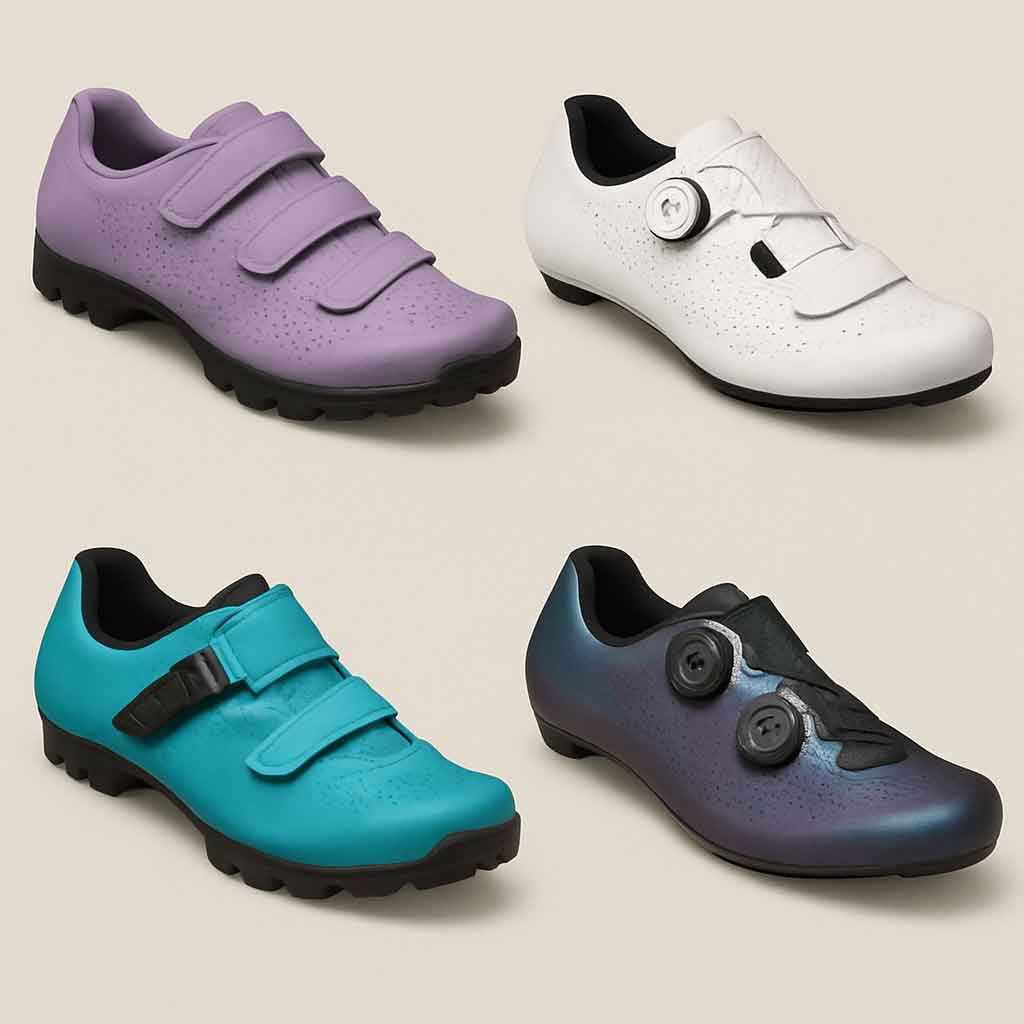
When selecting cycling shoes, several features should be considered to ensure you get the best fit and performance.
Fit and Comfort
The fit is arguably the most critical aspect of choosing cycling shoes. A well-fitting shoe should be snug but not too tight, providing enough room for your toes to wiggle. Women's cycling shoes, like womens cycling shoes pink or ladies pink cycling shoes, are specifically designed to accommodate the anatomical differences in women's feet, ensuring better comfort.
Importance of a Snug Fit
A snug fit is essential for cycling shoes to ensure that your feet remain secure, allowing for efficient energy transfer. Shoes that are too loose can cause your feet to move around, leading to blisters and discomfort, while overly tight shoes can restrict blood flow and cause numbness.
Anatomical Considerations for Women
Women's cycling shoes are designed to accommodate the unique anatomical features of a woman's foot. This includes a narrower heel and a lower instep, which can significantly enhance comfort and performance. Such designs ensure that female cyclists have shoes that fit well and support their specific needs.
Room for Toe Movement
While a snug fit is important, it's equally crucial to have enough room for your toes to move slightly. This prevents cramping and allows for natural foot movement, which can enhance comfort during long rides. The right balance ensures optimal performance and comfort.
Sole Stiffness
Sole stiffness is a crucial factor in cycling shoes, as it directly impacts power transfer. Road cycling shoes typically have stiffer soles compared to MTB or spinning shoes. Consider your cycling style and choose a stiffness level that matches your needs.
Impact on Performance
Stiff soles are vital for efficient power transfer, allowing cyclists to maximize their pedaling efficiency. The stiffer the sole, the more energy is transferred directly to the pedals, which is essential for competitive cyclists looking to improve their performance.
Balancing Stiffness and Comfort
While stiff soles are beneficial for performance, they can sometimes compromise comfort. It's essential to find a balance between stiffness and comfort based on your cycling habits and preferences. Recreational cyclists might prefer slightly more flexible soles for added comfort.
Different Stiffness Levels for Different Activities
Different cycling activities demand different levels of sole stiffness. Road cycling shoes often have the stiffest soles, while MTB and spinning shoes might offer a bit more flexibility. Understanding your primary cycling activity can help you choose the appropriate level of stiffness for your shoes.
Closure Systems
Cycling shoes come with various closure systems, including laces, Velcro straps, ratchet buckles, and BOA dials. Each has its pros and cons. For instance, BOA dials offer precise adjustments, while Velcro straps are quick and easy to use.
Laces for Traditionalists
Laces are a classic closure system that offers a custom fit. They provide uniform pressure across the foot, which can enhance comfort. However, they are not as quick to adjust as other systems, which can be a drawback during fast-paced rides.
Velcro and Ratchet Systems
Velcro straps and ratchet buckles are popular for their ease of use and quick adjustments. They allow cyclists to fine-tune the fit on the go, which is especially useful during rides. These systems provide a secure fit, ensuring that the shoe stays in place.
Precision with BOA Dials
BOA dials are known for their precision and ease of use. They allow for micro-adjustments, providing an exact fit that can be easily modified even while riding. This system is favored by many competitive cyclists for its convenience and reliability.
Cleat Compatibility
Ensure your cycling shoes are compatible with your bike pedals. Most road cycling shoes use a three-bolt cleat system, while mountain biking and spinning shoes often use a two-bolt system. Check your pedals and choose shoes like ladies SPD cycling shoes or womens SPD cycle shoes that match your setup.
Understanding Different Cleat Systems
Understanding the different cleat systems is vital for choosing the right cycling shoes. Road cycling typically uses a three-bolt system, which offers a larger platform for stability. Mountain biking and indoor cycling often use a two-bolt system, known for its ease of walking and versatility.
Matching Shoes to Pedals
It's essential to match your cycling shoes to the type of pedals on your bike. This ensures optimal performance and safety, as incompatible shoes and pedals can lead to inefficient pedaling and increased risk of accidents. Always check the specifications before purchasing.
Benefits of Proper Compatibility
Proper cleat compatibility ensures that your shoes fit securely onto the pedals, maximizing power transfer and stability. This compatibility is crucial for efficient cycling and helps prevent injuries caused by improper foot positioning or slippage.
Tips for Trying and Buying Cycling Shoes

by Duane Seah (https://unsplash.com/@duaneseah)
Before purchasing cycling shoes, it's essential to try them on and consider a few key factors:
Try Before You Buy
Whenever possible, try on several pairs of shoes to see which fits best. Walk around in them to ensure they are comfortable and offer the support you need.
Importance of In-Person Fitting
Trying on shoes in person allows you to get a real sense of their fit and comfort. This process helps you identify any potential issues, such as pressure points or lack of support, before making a purchase. It's a crucial step in finding the right pair.
Testing Different Brands and Models
Different brands and models may fit differently, even if they are the same size. By trying on various options, you can discover which brand and model suit your foot shape and cycling needs best. This exploration can lead to finding the perfect fit.
Evaluating Overall Comfort
When trying on shoes, pay attention to overall comfort, including the fit, arch support, and heel grip. These factors contribute to how well the shoe will perform during actual use. Ensuring comfort during the fitting process can lead to a more enjoyable cycling experience.
Consider Sock Thickness
When trying on cycling shoes, wear the socks you plan to use while cycling. Sock thickness can affect the fit, so it's important to ensure everything feels right together.
Matching Socks to Shoes
The thickness of your socks can significantly impact the fit of your cycling shoes. Wearing the same socks during fittings ensures that the shoes will fit as expected when you're out cycling. This consideration helps prevent unexpected discomfort during rides.
Impact on Fit and Comfort
Sock thickness can alter how snugly a shoe fits, affecting both comfort and performance. Thicker socks can make shoes feel tighter, while thinner socks might result in a looser fit. Understanding this impact can guide you in selecting the right shoe size and style.
Adjusting for Seasonal Changes
Consider seasonal changes and how they might affect your sock choice. Colder months may require thicker socks, while lighter options might be preferable in warmer weather. Planning for these variations can help maintain comfort year-round.
Shop Sales and Discounts
Cycling shoes can be a significant investment. Look for sales, such as ladies spinning shoes sale, to find high-quality shoes at a more affordable price.
Timing Your Purchases
Timing your purchases can help you take advantage of sales and discounts. Off-season or end-of-season sales often offer the best deals, allowing you to purchase high-quality cycling shoes at reduced prices. Being strategic about when you buy can lead to significant savings.
Exploring Online and In-Store Options
Both online and in-store options can provide sales and discounts. Online retailers might offer exclusive promotions, while local shops may have clearance sections with great deals. Exploring both avenues can expand your opportunities to save.
Balancing Cost and Quality
While sales and discounts are attractive, it's essential to balance cost with quality. Investing in a durable and comfortable pair of cycling shoes, even at a higher price, can lead to better performance and satisfaction. Prioritizing quality ensures that your investment will last.
Maintaining Your Cycling Shoes
Once you've found the perfect pair of cycling shoes, it's essential to maintain them to extend their lifespan and performance.
Cleaning
Regularly clean your cycling shoes by wiping them down with a damp cloth. For stubborn dirt, especially on MTB shoes, use a soft brush. Avoid soaking them in water to prevent damage.
Regular Cleaning Routine
Establishing a regular cleaning routine is crucial for maintaining the appearance and functionality of your cycling shoes. After each ride, take a few minutes to wipe off dirt and grime, preventing buildup that can degrade materials over time.
Dealing with Stubborn Dirt
For more stubborn dirt, particularly on mountain biking shoes, a soft brush can be effective. Gently scrubbing the affected areas can remove debris without damaging the shoe's materials. This attention to detail keeps your shoes looking and performing their best.
Avoiding Water Damage
While cleaning is essential, it's crucial to avoid soaking your shoes in water. Excessive moisture can weaken adhesives and warp materials, leading to premature wear. Instead, focus on spot cleaning and allow shoes to air dry naturally.
Drying
After cleaning or riding in wet conditions, let your shoes air dry. Avoid direct heat sources like radiators, as they can warp the material.
Air Drying Techniques
Air drying is the safest way to dry your cycling shoes after cleaning or wet rides. Remove the insoles and loosen any closures to allow maximum air circulation. This method ensures thorough drying without damaging the shoe structure.
Avoiding Direct Heat
Direct heat sources, such as radiators or hair dryers, can warp the materials of your cycling shoes. This can lead to a poor fit and reduced performance. Always opt for natural air drying to maintain the integrity of your shoes.
Speeding Up the Drying Process
To speed up the drying process, consider stuffing your shoes with newspaper. The paper will absorb moisture quickly, helping the shoes dry faster. Just be sure to replace the newspaper as it becomes saturated.
Replacing Cleats
Check the condition of your cleats regularly. Worn-out cleats can affect your pedaling efficiency and safety. Replace them as needed to maintain optimal performance.
Monitoring Cleat Wear
Regularly inspect your cleats for signs of wear, such as rounded edges or difficulty clipping in and out. Worn cleats can reduce pedaling efficiency and increase the risk of slipping, making regular checks essential for safety.
Easy Replacement Process
Replacing cleats is a straightforward process that can be done at home with basic tools. Most cycling shoes have markings to help align new cleats correctly, ensuring proper positioning for optimal performance. Following the manufacturer's guidelines can simplify the process.
Benefits of New Cleats
Installing new cleats can rejuvenate the performance of your cycling shoes, restoring efficient power transfer and secure pedal engagement. This maintenance step is crucial for competitive cyclists seeking to maintain peak performance levels.
Conclusion
Choosing the right cycling shoes involves understanding your specific needs and preferences. Whether you're looking for womens bike riding shoes, ladies road bike shoes, or indoor bike shoes womens, taking the time to consider factors like fit, sole stiffness, and cleat compatibility will help you find the perfect pair. With the right shoes, you'll enhance your cycling experience, improve performance, and enjoy the ride more than ever.
Tailoring Shoes to Your Cycling Style
Understanding your cycling style and preferences is crucial for selecting the right shoes. Whether you're a road cyclist, mountain biker, or indoor enthusiast, there's a shoe designed to meet your specific needs. Taking the time to assess these preferences ensures a better cycling experience.
Investing in Quality and Comfort
Investing in quality cycling shoes pays off in terms of comfort and performance. While the initial cost might be higher, the long-term benefits of enhanced cycling efficiency, reduced fatigue, and increased enjoyment make it a worthwhile investment. Prioritizing quality ensures a satisfying and lasting purchase.
Enjoying the Ride
Ultimately, the right cycling shoes can transform your riding experience. With improved comfort, safety, and performance, you'll find yourself more engaged and excited about every ride. Embrace the journey with confidence, knowing you've made an informed and beneficial choice in your footwear.



